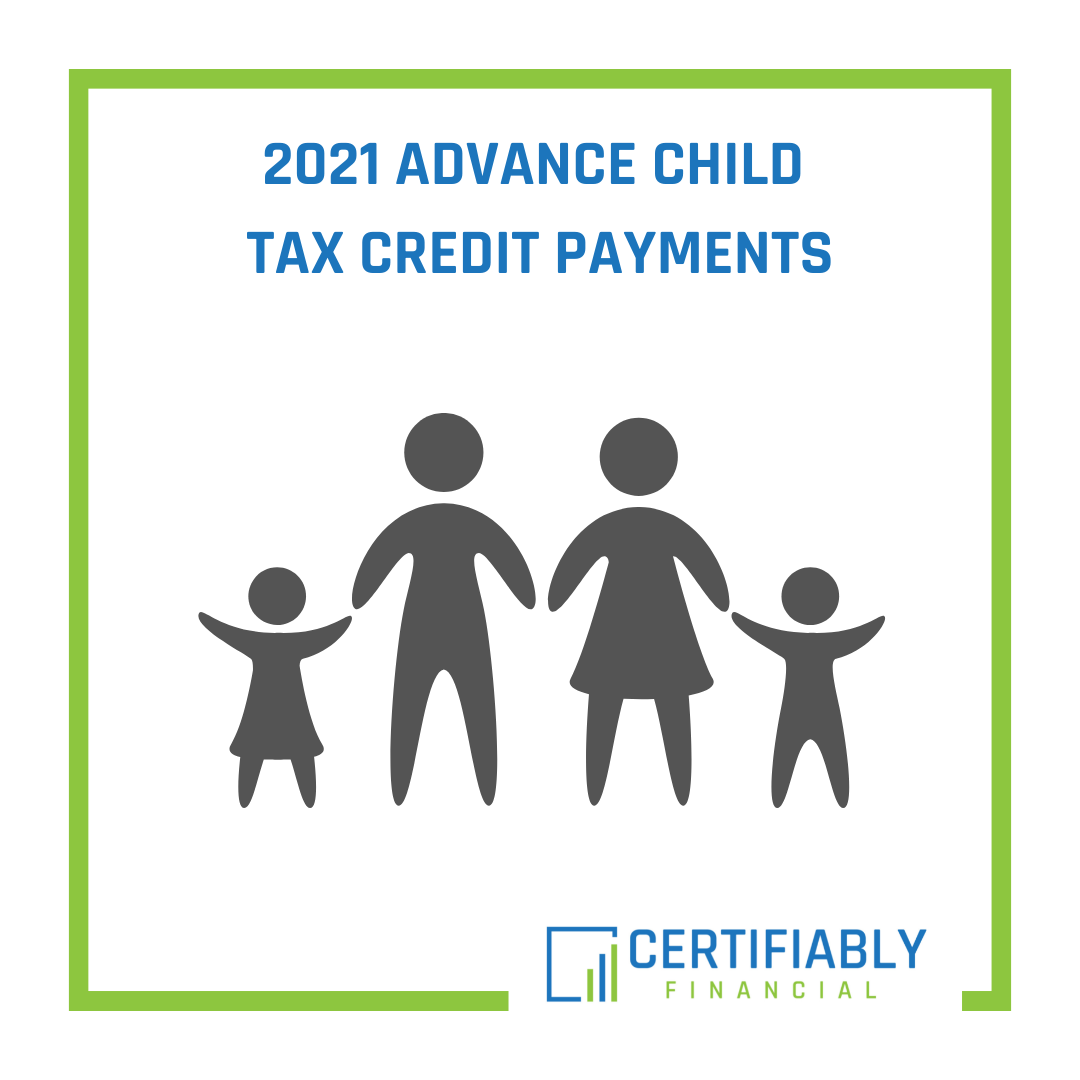Kids are expensive. According to the USDA, the cost of a middle-income married couple raising a child born in 2015 was expected to be $233,610 from birth through the child’s age 171. That seems like an insane amount of money. Luckily, a law passed earlier this year may help out with a small portion of your 2021 expenses.
Changes to the Child Tax Credit
The United States tax code provides tax benefits for parents and guardians of dependent children including a dependent deduction, Child Tax Credit, and Child and Dependent Care Credit, among others. You can find a list with more details about each here: https://www.irs.gov/newsroom/check-out-these-tax-benefits-for-parents
The American Rescue Plan Act of 2021, signed into law March 11, 2021 as a means to help speed up the economic recovery from the COVID-19 pandemic, significantly expanded the Child Tax Credit in 2021. This law increased the tax credit from $2,000 per qualifying child up to $3,000 in 2021 (an increase of $1,000). The credit was enhanced ever further for qualifying children under the age of 6 as of December 31, 2021 to $3,600 per child (an increase of $1,600).
Advance Payments of the Child Tax Credit
While there are many details and nuances that we could get into regarding the changes to the Child Tax Credit, one of the most significant changes is that the IRS will pay half of the total credit in advance with monthly payments beginning July 15, 2021 through December 2021.
If you received Letter 6416, 6416-A, or 6417 from the IRS, then you may be eligible to receive these advance payments.
The amount of advance Child Tax Credit payments that you receive will be based on your AGI on your most recently filed tax return (2019 or 2020) if you claimed the Child Tax Credit, or if you have otherwise provided information to the IRS a different way.
You will be automatically enrolled in these monthly payments unless you take action to specifically direct the IRS to not make these payments to you. You can use this tool from the IRS to check and see if you’re enrolled to receive payments, unenroll, or provide updated bank account information: https://www.irs.gov/credits-deductions/advance-child-tax-credit-payments-in-2021.
I have found this calculator helpful to figure out how much clients are likely to receive in advance payments. Although by this time you should have received a letter from the IRS indicating how much you will receive each month.
Advance Payment Calculator: https://www.kiplinger.com/taxes/602334/2021-child-tax-credit-calculator
Eligibility for Advance Child Tax Credit Payments
Americans who filed a tax return last year who claimed a Child Tax Credit and had a modified AGI of $400,000 or less for joint filers or $200,000 or less for single filers may expect to receive Advance Child Tax Credit Payments.
There are a couple of phaseout ranges based on modified AGI to determine how much of the credit you will receive. The first phaseout is only for the increase in the credit (the amount above $2,000 for each qualifying child) beginning with joint filers with AGI above $150,000, head of household filers with AGI above $112,500, and all other filers with AGI above $75,000.
The second phaseout is for the regular portion of the Child Tax Credit, excluding the additional credit that was expanded under the American Rescue Plan Act. The phaseout for the base amount of Child Tax Credit begins with joint fullers with AGI of $400,000 and single filers with AGI of $200,000.
You Can Opt Out of Monthly Payments
Some people who are set to receive advance payments have elected to opt out. Since the payments are based on last year’s tax return, you could end up receiving more of a credit paid to you over the next six months than you should if your income will be significantly higher in 2021 than it was in 2020.
If you file your taxes and find out that you received more of a credit than you were supposed to based on the income phaseouts, then you will be required to pay back the extra to the IRS.
Create a Strategy for Advance Payments
It’s really easy for extra income to automatically be spent if there isn’t a strategy in place to do something else with it. If you filed your most recent tax return (2020 or 2019) with an AGI of $400,000 or below as joint filers or $200,000 or below as a single filer and claimed a Child Tax Credit, then it may be time to consider what your strategy for advance payments will be.
Will you save them? Invest them for your child’s future college education? Pay off debt? Spend them? Something else? Having a plan in place before receiving money is always a good thing to do. Whatever you do, be sure not to get used to depending on the funds because the payments are set to expire at the end of 2021.
More Questions on the Child Tax Credit?
If you have more questions about the expanded Child Tax Credit under the American Rescue Plan Act of 2021, you can find the IRS’ FAQ on the topic here: https://www.irs.gov/credits-deductions/2021-child-tax-credit-and-advance-child-tax-credit-payments-topic-b-eligibility-for-advance-child-tax-credit-payments-and-the-2021-child-tax-credit
1 The Cost of Raising a Child (USDA): https://www.usda.gov/media/blog/2017/01/13/cost-raising-child

